Piero has spent much of his career helping people to live fulfilling lives. In addition to working as a psychotherapist, he has written books on many strength-enhancing themes.
The titles of these books tell some of the story. These include, for example, The Power of Kindness and Beauty and The Soul.
His most recent book was Your Inner Will: Finding Personal Strength in Critical Times. Here are some tips from the book.
http://www.huffingtonpost.com/2014/08/22/inner-will_n_5698048.html
Piero has a wise way of sharing life’s knowledge. Drawing on a vast reservoir of experience, stories and research, he communicates in ways that connect with people. Here is a piece that gives an introduction to his work.
Background
Piero grew up in Italy and now lives near Florence. Always interested in human potential, he spent some time in the USA during the late 1960s.
Like many others, he visited The Esalen Institute and tried many forms of development. During one of these visit he heard about his countryman, Roberto Assagioli, the founder of psychosynthesis.
Returning to Italy, Piero sought out him. This eventually led to assisting and learning from Assagioli for many years.
Roberto was more concerned with the spirit of psychosynthesis, than its dogma. He saw it as a framework for enabling people to focus on the strong parts of themselves, rather than just on their pathologies.
In a frequently quoted interview he gave to Sam Keen for the December 1974 edition of Psychology Today, Roberto explained:
We pay far more attention to the higher unconscious and to the development of the transpersonal self. In one of his letters Freud said, “I am interested only in the basement of the human being.”
Psychosynthesis is interested in the whole building. We try to build an elevator which will allow a person access to every level of his personality. After all, a building with only a basement is very limited. We want to open up the terrace where you can sun-bathe or look at the stars.
Our concern is the synthesis of all areas of the personality. That means Psychosynthesis is holistic, global and inclusive.
It is not against psychoanalysis or even behaviour modification but it insists that the needs for meaning, for higher values, for a spiritual life, are as real as biological or social needs. We deny that there are any isolated human problems.
Piero’s Books
Building on the foundations of psychosynthesis, Piero began producing books that highlight the positive themes in human nature. Whilst exploring humanity’s highest virtues, his writing has a down-to-earth quality that many people find accessible. Here is an introduction to some of these books.
Piero published What We May Be: The Vision and Techniques of Psychosynthesis in 1982. This provides many practical tools and techniques that people can use in their daily lives and work. M. Scott Peck, author of The Road Less Travelled, wrote:
“Lucidly written, Piero Ferrucci’s What We May Be brings the enlightenment of psychosynthesis to the American people in a most compelling and delighting way. This is no cheap illusory fix. It’s very real and elegantly down-to-earth. The publication of this book certifies that our consciousness is rising.”
Piero’s next book took readers into new territory. Inevitable Grace explores breakthroughs in the lives of great women and men.
Based on years of research, he describes seven routes that people can pursue towards fulfilling their potential.
The Way of Beauty
This is the way of aesthetic enjoyment, inspiration and creativity. Such people see beauty in different things – be this in art, nature or people. It is the route pursued by artists, musicians, writers and those who see beauty in others.
The Way of Action
This is the way of action and serving others. Such people often see us as ‘all connected’. So they may become activists, benefactors, philanthropists, social pioneers or others who work to improve the quality of people’s lives.
The Way of Illumination
This is the way of enlightenment. Such people may focus on contemplation, sharing visions or inspiring others. They may be spiritual leaders or, in the broadest sense of the word, educators.
The Way of Dance and Ritual
This is the way of movement, ritual and performance. Such people may follow certain eternal principles that engage others and help them to experience new dimensions. They may be dancers, actors, sacred leaders or even orchestrators of groups.
The Way of Science
This is the way of research, observation and seeking truth. Such people want to know how things work or how they can be improved. They may be scientists, inventors or others who want to improve aspects of life.
The Way of Devotion
This is the way of following a spiritual faith or cause. Such people are totally committed to exploring the details of their chosen field. They may be mystics, deep students or even extremists.
The Way of The Will
This is the way of people who dare. Such people venture into the unknown or push the boundaries of what is already known. They may be explorers, athletes, pioneers or people who fight for human rights and freedoms.
Piero’s next book was What Our Children Teach Us: Lessons in Joy, Love and Awareness. Published in 1997, it focused on the lessons we can learn from children as parents, relatives and educators. He wrote, for example:
“Live with children long enough and beauty, love, innocence, play, pain, and death, everything appears in a new light …”
Writing about what he learned from his sons, Piero highlights the principles that can be applied in many areas of life. Children bring us back to the present, he writes, and become more aware.
Piero then notices three fundamental changes happening in himself.
“First, I see that the reality around me and in me is far richer than I thought.
“Second, wherever I am, there is nowhere else to go, because I am already there.
“Third, I give more of myself.”
It is okay to slow down, experience the moment and help others to enjoy life, says Piero. He adds:
“Being present means being ready and available. I am here for you. My mind does not escape into a more interesting future. It does not choose the world of fantasy, nor is it haunted by echoes of the past. With all my being, I am here for you.”
Piero’s next book focused on the art of kindness. After a preface written by the Dalai Lama, Piero outlines the benefits of kindness, both for the giver and the receiver.
He also says that, despite many headlines about cruelty, millions of acts of kindness happen every day. Piero explains:
“However special it may sound it (kindness) is by no means exceptional. On the contrary, it comprises a great deal of human interactions … The fabric of our lives is made of care, solidarity, mutual service. These qualities are so embedded in our daily events that we may not even notice them.”
Piero believes that kindness may be the main way to help both present and future generations. Looking at our relationship with the planet, he says:
“Kindness is urgent in our relationship with our living environment. If we do not respect and love nature, do not treat her with loving kindness and the awe she deserves, we will end up intoxicated by our own poisons.
“It is up to us. It is a choice in the life of each of us – to take the way of selfishness and abuse, or the way of solidarity and kindness. In this exciting but dangerous moment of human history, kindness is not a luxury, it is a necessity.
“Being kind is taking a stand. By itself it may not help: Maybe our kindness will be ineffective … Never mind. We have affirmed a principle, a way of being.”
Piero says that people often feel better when they are kind. This benefits both ourselves and others. He explains:
“… if we are healthier when we are caring, empathic, and open to others, it means we were born to be kind. If we push our way forward, cultivate hostile thoughts, or bear life long grudges, we will not be at our best.
“And if we ignore or repress our positive qualities, we may harm ourselves or others. As psychiatrist Alberto Alberti maintains, love that is not expressed becomes hate, joy that is not enjoyed become depression. Yes, we are designed to be kind.
“My thesis is that true kindness is a strong, genuine, warm way of being … Kindness itself may seem lightweight, and yet it is a central factor in our lives. It has a surprising power to transform us, perhaps more than any other attitude or technique.”
Piero then quotes Aldous Huxley, the writer who experimented with many methods of developing human potential. These included drugs, meditation, bodywork, Zen and other things. Towards the end of his life, Huxley said in a lecture:
“People often ask me what is the most effective technique for transforming their life. It is a little embarrassing that after years and years of research and experimentation, I have to say that the best answer is – just be a little bit kinder.”
Piero’s has also written Beauty and The Soul. You can read more about it on his web site at the link below.
http://www.pieroferrucci.it/index_eng.html
“All of us, in one way or another, seek beauty,” writes Piero. “We know it brings happiness and wellbeing.”
Beauty, as ever, is in the eye of the beholder. A person might experience beauty in nature, art, music, theatre, sport, mathematics, ideas, meaning or whatever. Piero continues:
“Some manage to see the inner beauty of people: generosity, intelligence, honesty. It is a beauty less evident, but deeper and more lasting.”
Beauty can help us to heal, feel alive and open our eyes, says Piero. It can help us to reconnect with our feelings, connect with other people and discover new dimensions. Beauty is more than an extra, it is a basic necessity of life. He adds:
“Beauty, then, brings us back to the here and now. In the presence of beauty it is harder to be distracted. To follow the way of beauty means to live in a state of mindfulness that does not admit distraction or escape.
“We are here with our whole being. This is our kairos, as it was called in ancient Greece: The moment of opportunity, the timeless instant when revelation comes.”
Beauty is the perfect medicine, says Piero. Its side effects are positive, rather than negative. This is certainly true when it comes to people. He writes:
“Moral beauty is alive and well. In fact both kinds of beauty exist – outer and inner. The former is more obvious, more likely to attract attention, more immediate, gratifying and short-term.
“The latter is subtler, deeper, usually needs more time to be perceived. And often it is not fully disclosed to the distracted eye. Physical beauty is a sprinter – it covers short distances faster. Beauty of the soul is a marathoner – it shows up over long distance.”
Piero writes like a poet, but he supports this with facts. The book describes many studies showing the tangible benefits of beauty in schools, hospitals, work places and society. Beauty nourishes the soul. But it may also be necessary for our survival as a species.
There are many philosophers, psychologists and others who are helping people to tap into their inner strengths. Piero’s work is both accessible and inspiring. He is making a great contribution to helping people to live fulfilling lives.


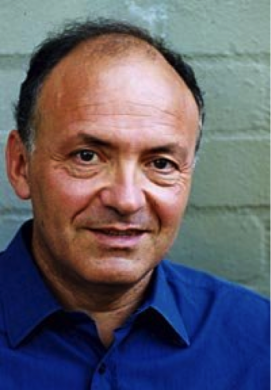
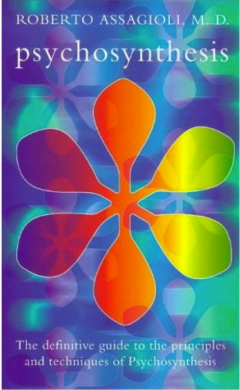
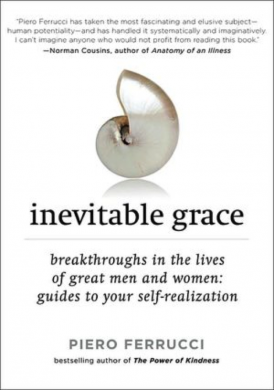
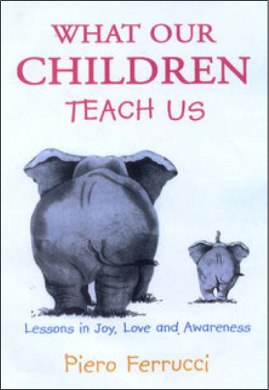
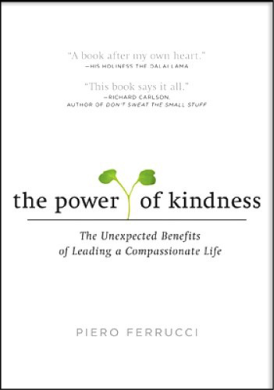
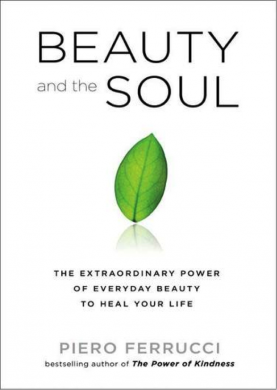




I’m a teacher in Massachusetts. I love Piero Ferrucci and most recently decided to incorporate my favorite book The Power of Kindness into my seventh grade, virtual ELA classroom.
I just saw your materials and will use them as well. You are incredible forces in the world.Kids are open to the messages.